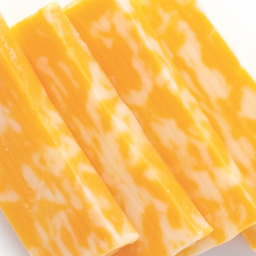قد يتسبب الرصاص في إيذاء عائلتكِ.
الرصاص هو معدنٌ لا تحتاج إليه أجسامنا. ويمكن أن يسبب وجود الكثير من الرصاص في أجسامنا مشكلات صحية، لا سيما للأطفال.
قد لا تظهر أعراض المرض على مظهر وسلوك الأطفال الذين يتعرضون لمعدلات زائدة من الرصاص، ولكن قد يعانون من مشكلات فيما يتعلق بالنمو والتعلُّم.
تجنَّبي
- تخزين الأطعمة في الفخار المستورد المصقول بالرصاص، أو حاويات الكريستال المحتوي على الرصاص
- الفاكهة أو الخضراوات المزروعة في تربة مُلوَّثة بالرصاص
- الأطعمة أو المشروبات المصنوعة باستخدام المياه المُلوَّثة بالرصاص
- السماح للأطفال بأكل الطلاء المتقطع أو المتقشر، أو مضغه
تناولي كميات أقل مما يأتي
- الأطعمة المقلية
- اللحوم التي تحتوي على نسب عالية من الدهون، مثل السجق، ولحم الخنزير المقدد، والنقانق
- الأطعمة المطهوة باستخدام اللحوم الدهنية، والزبدة، وشحم الخنزير
- الوجبات الخفيفة الغنية بالدهون، مثل رقائق البطاطس، والكعك
احمي عائلتكِ من الرصاص بتناول الأطعمة الصحية!
ثلاثة عناصر غذائية رئيسية
- فيتامين ج
- الحديد
- الكالسيوم
التغذية الجيدة
إنَّ التغذية الجيدة إحدى طرق حماية أسرتكِ من الرصاص.
بالنسبة إلى الأطفال والكبار، يمكن لثلاثة عناصر غذائية أساسية أن تؤدي دورًا رئيسيًّا في حماية الجسم من الآثار الضارة للرصاص، وهي:
- الكالسيوم
- الحديد
- فيتامين ج
تساعد هذه العناصر الغذائية الجسم على امتصاص كمية أقل من الرصاص، كما أنها تمثل جزءًا مهمًّا من أي نظام غذائي صحي. احرصي على اختيار مجموعة متنوعة من الأطعمة كل يوم.
بالنسبة إلى الأطفال الرضع، يوفر حليب الأم أفضل تغذية، بالإضافة إلى العديد من الفوائد الصحية منذ الولادة.

تشمل مصادر الكالسيوم ما يأتي:
- الحليب
- الزبادي
- الجبن
- الجبن القريش
- حلوى البودينج
- عصير البرتقال الغني بالكالسيوم
- الخضراوات ذات الأوراق الخضراء الداكنة

تشمل مصادر عنصر الحديد ما يلي:
- حبوب الإفطار المعتمَدة من برنامج WIC
- البقوليات (البازلاء، والفاصوليا، والعدس)
- الفواكه المجففة
- اللحوم الحمراء الخالية من الدهون، والأسماك، والدجاج، والديك الرومي
- الخضراوات ذات الأوراق الخضراء الداكنة

تشمل مصادر فيتامين "ج" ما يلي:
- البرتقال
- الجريب فروت
- الطماطم
- الفلفل الرومي
- البروكلي
- البطاطس
- الفراولة
- البطيخ
- العصائر المعتمَدة من برنامج WIC
تخطيط الوجبات
من المهم أن تتناول أسرتكِ الوجبات الرئيسية والوجبات الخفيفة بشكلٍ منتظم؛ فقد يساعد هذا على منع امتصاص أجسامهم للرصاص. استشيري اختصاصي التغذية التابع لبرنامج WIC عن الأفكار الخاصة بخيارات الأطعمة الصحية وأحجام الحصص الغذائية.
تناولي كميات أكبر مما يأتي
- اللحوم الخالية من الدهون
- الأطعمة المطهوة في الفرن، أو المشوية، أو المطهوة على البخار
- الفاكهة والخضراوات الطازجة
- الوجبات الخفيفة قليلة الدسم، مثل البسكويت المملح، ومقرمشات جراهام، وحلوى عصير الفاكهة المجمد
تذكَّري – احرصي على غسل يدَيكِ دائمًا قبل الأكل!
تحدَّثي إلى مُقدِّم خدمات الرعاية الصحية بشأن إجراء اختبار الرصاص لطفلكِ. للحصول على مزيد من المعلومات حول الرصاص، تواصلي مع Indiana Lead and Healthy Homes Program (برنامج ولاية إنديانا المعني بالرصاص والمنازل الصحية) من خلال:
تعمل هذه المؤسسة بمبدأ تكافؤ الفرص.